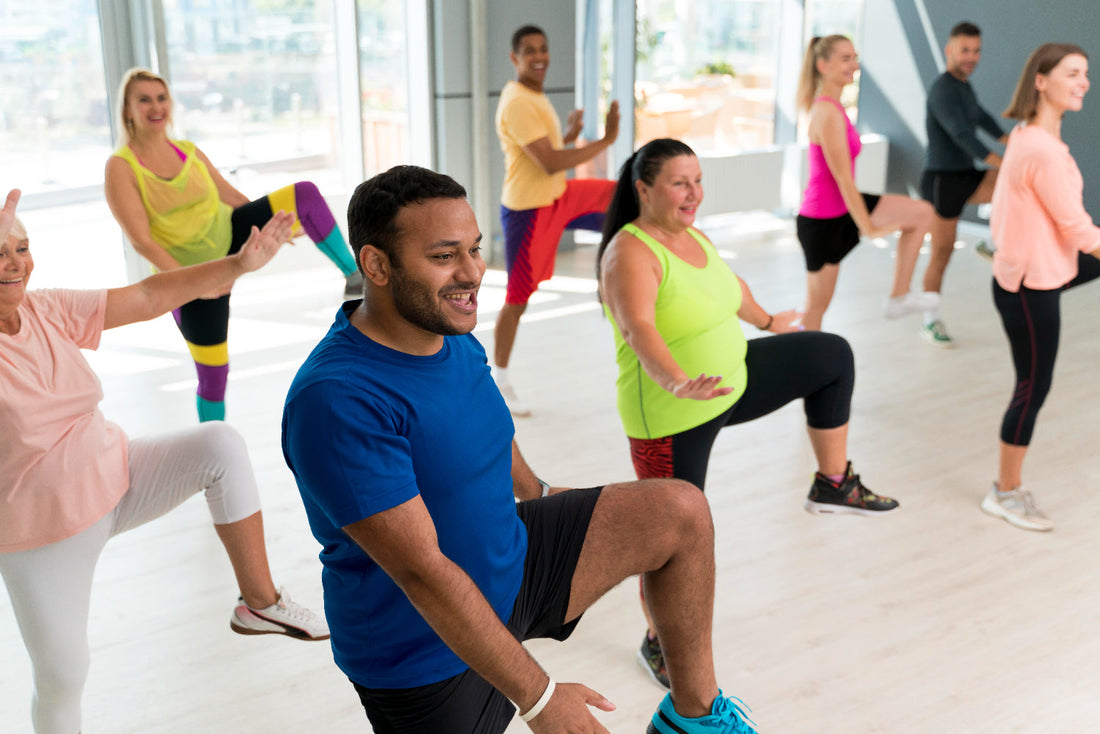In today's fast-paced world, finding time for a long workout can be a challenge. Balancing work, family, and personal commitments often leaves little room for hitting the gym or going for a long run. But what if you could achieve your fitness goals with short, effective workouts? Enter micro workouts—brief, intense bursts of exercise that can fit into even the busiest schedules. In this blog, we'll explore what micro workouts are, their benefits, and how you can incorporate them into your daily routine for a quick path to fitness.
What Are Micro Workouts?
Micro workouts are short exercise sessions that typically last between 5 to 15 minutes. These workouts are designed to be intense, focusing on maximizing effort in a short period. The idea is to squeeze the benefits of a longer workout into a shorter time frame by increasing the intensity. Whether it's a quick set of push-ups, a sprint, or a high-intensity interval training (HIIT) session, micro workouts can be done anywhere and anytime, making them incredibly convenient.
The Science Behind Micro Workouts
Research has shown that high-intensity exercise, even in short bursts, can provide significant health benefits. When you engage in intense exercise, your heart rate increases, and your body works harder to supply oxygen to your muscles. This process can help improve cardiovascular health, increase metabolism, and build muscle strength. Micro workouts leverage the principles of high-intensity training to deliver these benefits in a compact timeframe.
Benefits of Micro Workouts
- Time Efficiency: One of the most significant advantages of micro workouts is their time efficiency. You don't need to set aside an hour or more for exercise. Instead, you can fit a quick workout into your schedule, whether it's during a lunch break, before work, or even in between meetings.
- Flexibility: Micro workouts can be done anywhere—at home, in the office, or even outdoors. You don't need any special equipment or a gym membership. Bodyweight exercises like squats, lunges, push-ups, and burpees are all great options for micro workouts.
- Consistency: Shorter workouts can be easier to commit to, helping you maintain a consistent exercise routine. Consistency is key to achieving long-term fitness goals, and micro workouts make it easier to stay on track.
- Improved Metabolism: High-intensity exercise can boost your metabolism, helping you burn more calories even after you've finished working out. This effect, known as the afterburn effect, can contribute to weight loss and improved overall fitness.
- Enhanced Mood and Energy: Exercise releases endorphins, the body's natural mood enhancers. Even a brief workout can help reduce stress, improve your mood, and boost your energy levels throughout the day.
Types of Micro Workouts
There are many different types of micro workouts you can try, depending on your fitness level and goals. Here are a few examples:
- HIIT (High-Intensity Interval Training): HIIT involves alternating between short bursts of intense activity and periods of rest or low-intensity exercise. For example, you might do 30 seconds of sprinting followed by 30 seconds of walking, repeated for 10 minutes.
- Tabata Training: Tabata is a form of HIIT that consists of 20 seconds of maximum effort followed by 10 seconds of rest, repeated for 4 minutes. You can choose any exercise, such as jumping jacks, push-ups, or squats.
- Circuit Training: In circuit training, you perform a series of exercises one after the other with little to no rest in between. Each exercise targets a different muscle group, providing a full-body workout in a short amount of time.
- Bodyweight Exercises: Simple bodyweight exercises like push-ups, squats, lunges, and planks can be performed in quick succession for an effective micro workout.
How to Incorporate Micro Workouts into Your Day
Incorporating micro workouts into your daily routine is easier than you might think. Here are some tips to get started:
- Set a Schedule: Identify specific times during the day when you can fit in a quick workout. It could be first thing in the morning, during your lunch break, or in the evening before dinner.
- Use Breaks Wisely: Make use of short breaks throughout your day. Instead of scrolling through your phone, do a quick set of exercises. Even a few minutes can make a difference.
- Combine Activities: Incorporate micro workouts into your existing activities. For example, do calf raises while brushing your teeth, or lunges while waiting for your coffee to brew.
- Stay Motivated: Keep your workouts interesting by varying the exercises and trying new routines. Setting small, achievable goals can also help you stay motivated and track your progress.
- Listen to Your Body: While it's essential to push yourself, it's also important to listen to your body. If you're feeling overly fatigued or sore, take a rest day or opt for a lower-intensity workout.
Conclusion
Micro workouts offer a convenient and effective way to stay fit, even with a busy schedule. By incorporating short, intense bursts of exercise into your day, you can enjoy the benefits of improved cardiovascular health, increased metabolism, and enhanced mood and energy. Whether you're a fitness enthusiast or just starting, micro workouts can be a quick path to achieving your fitness goals. So, lace up your sneakers, set a timer, and discover the power of micro workouts for yourself!






